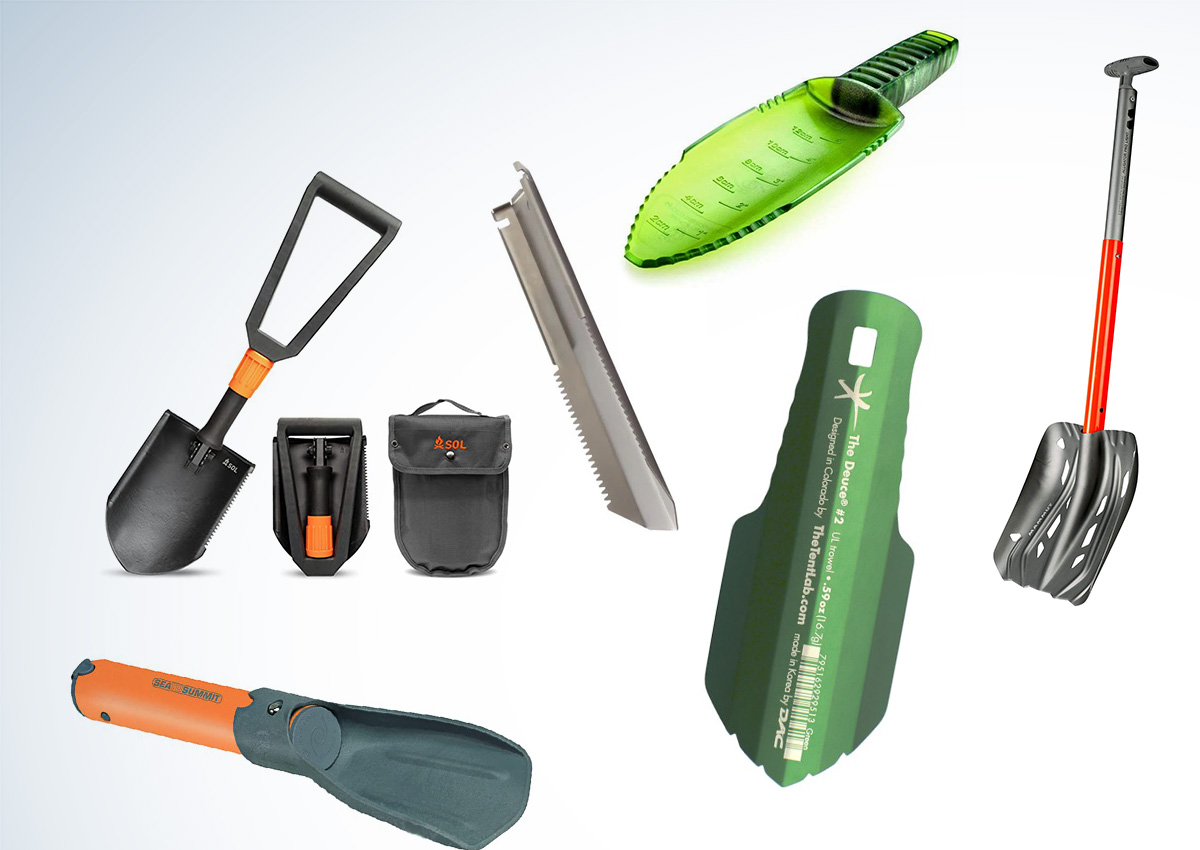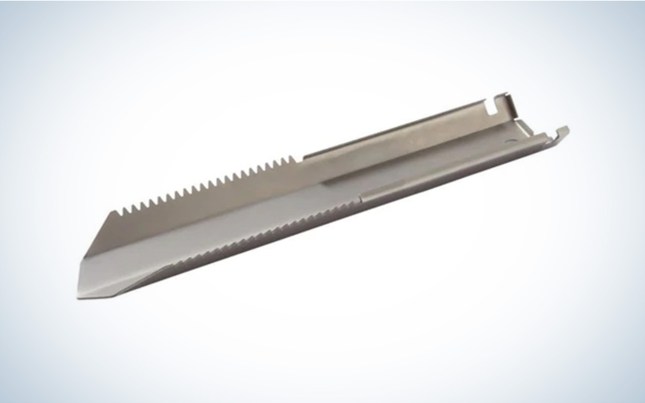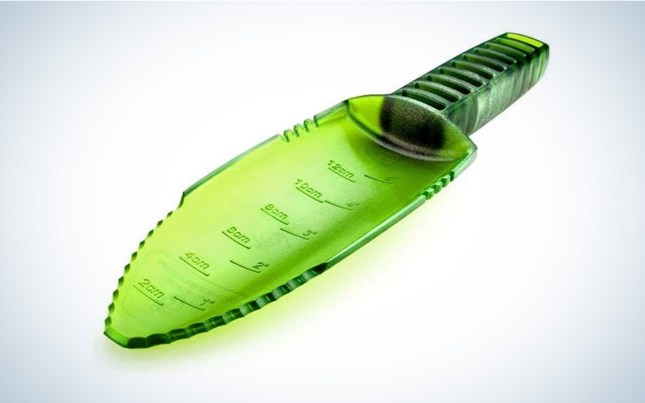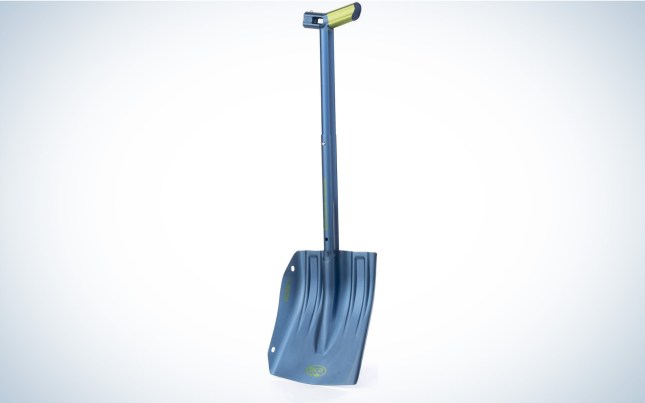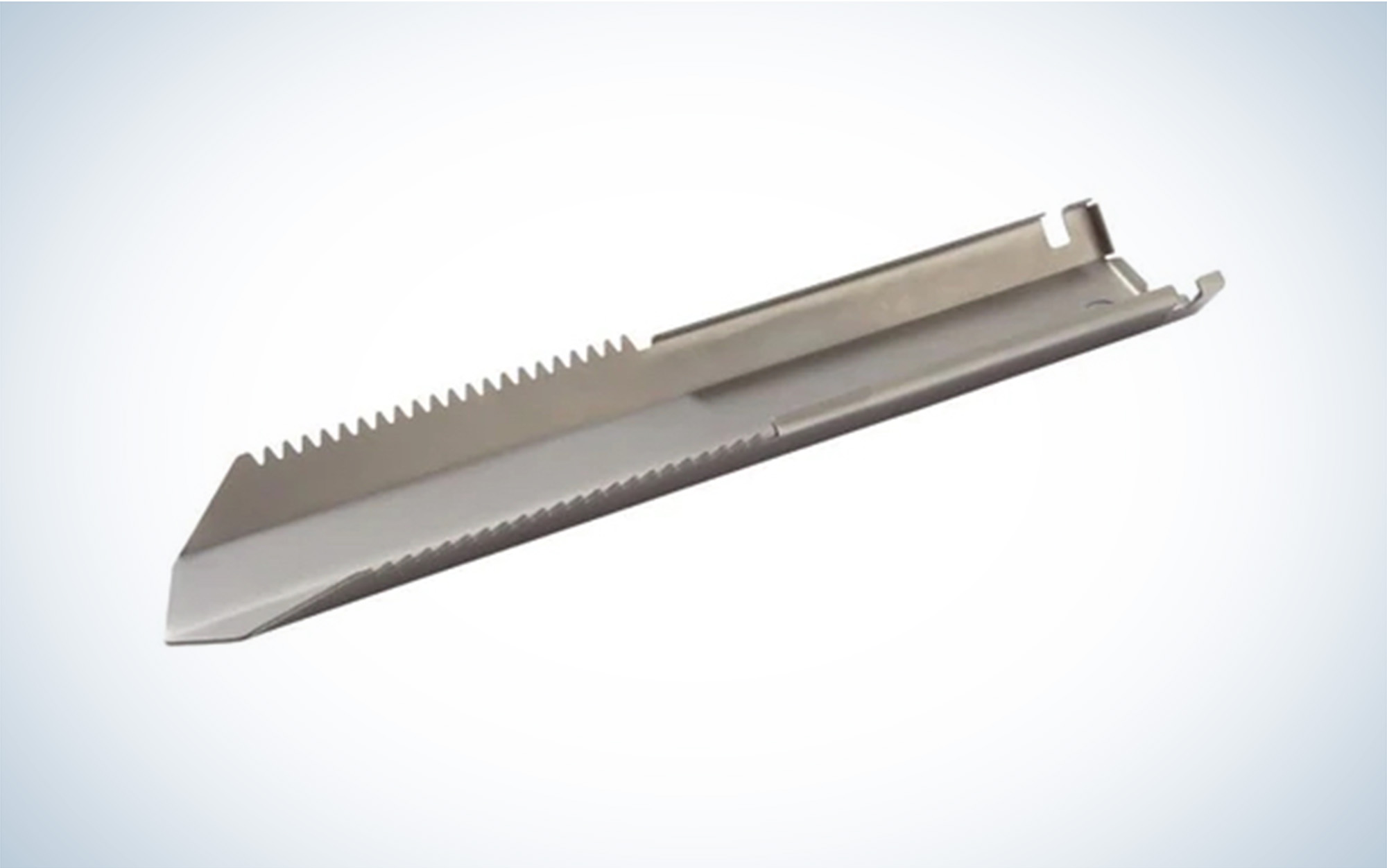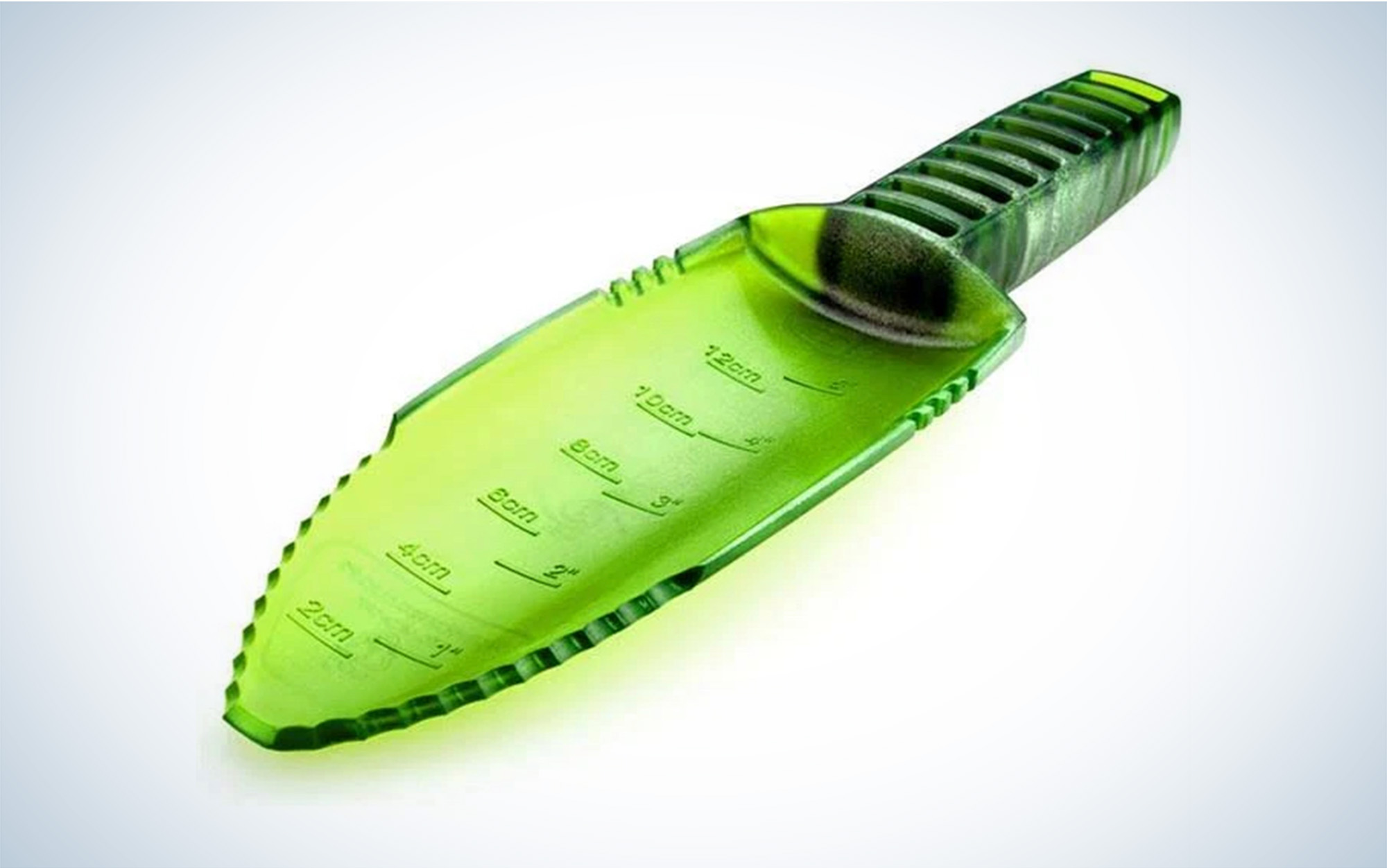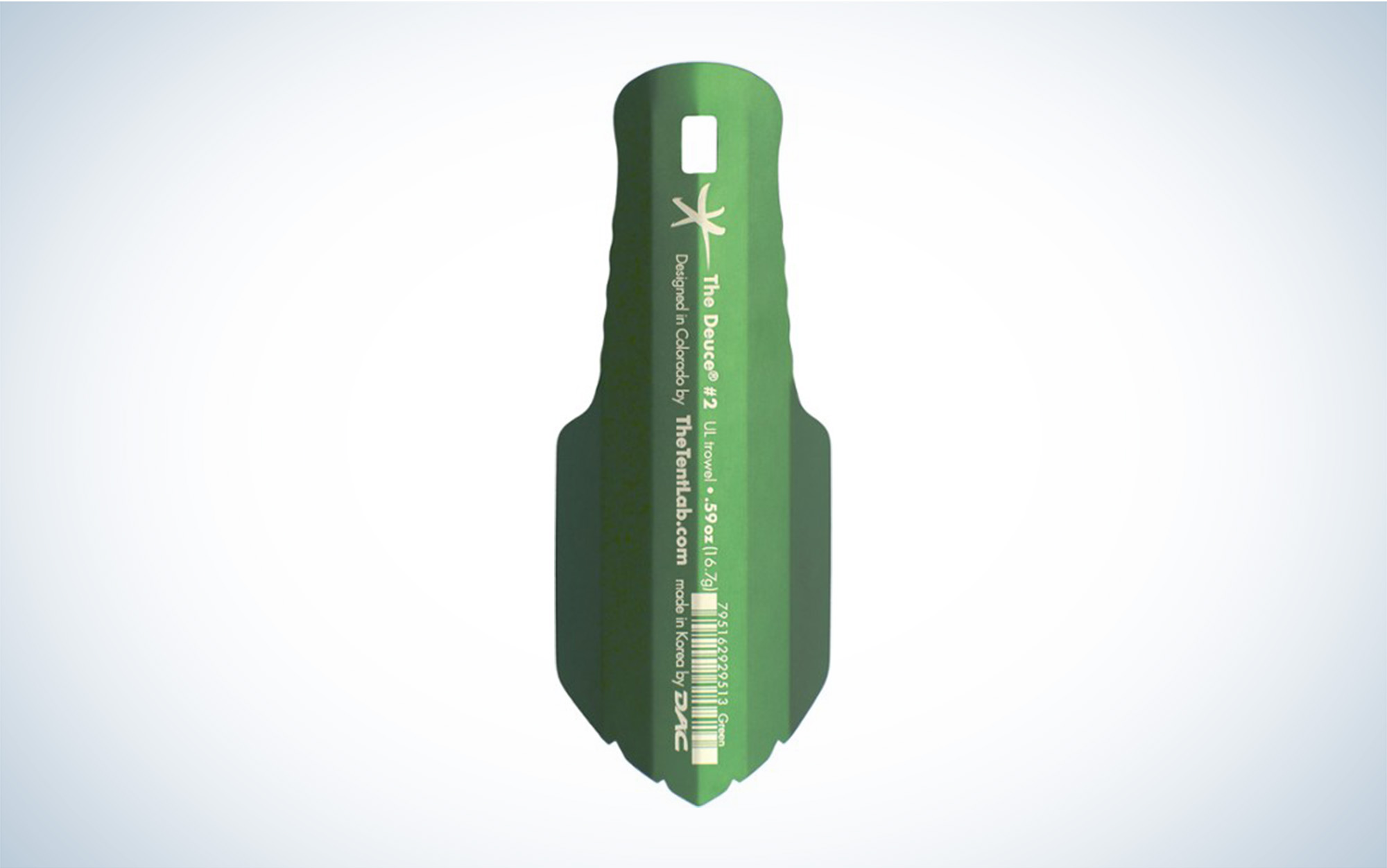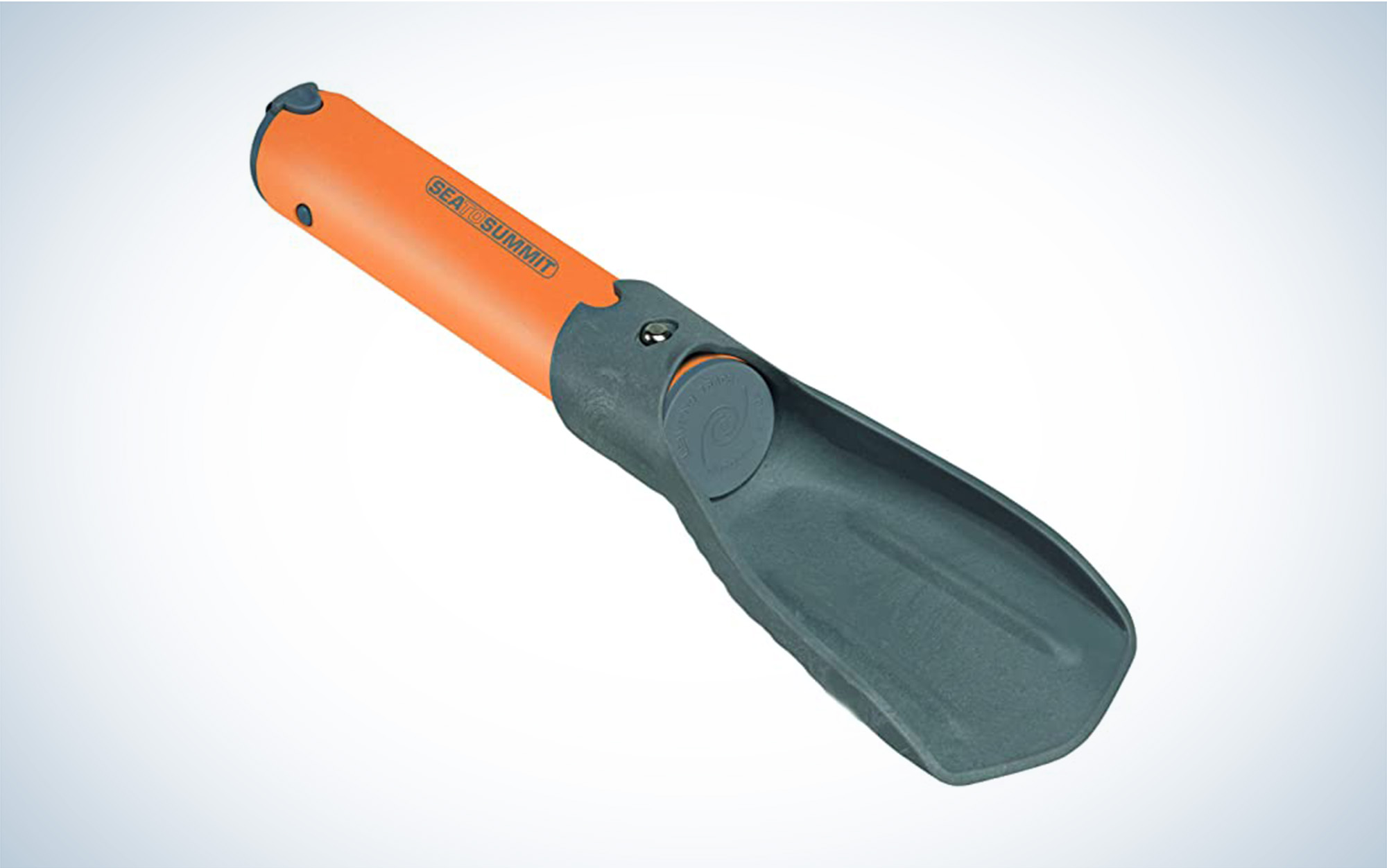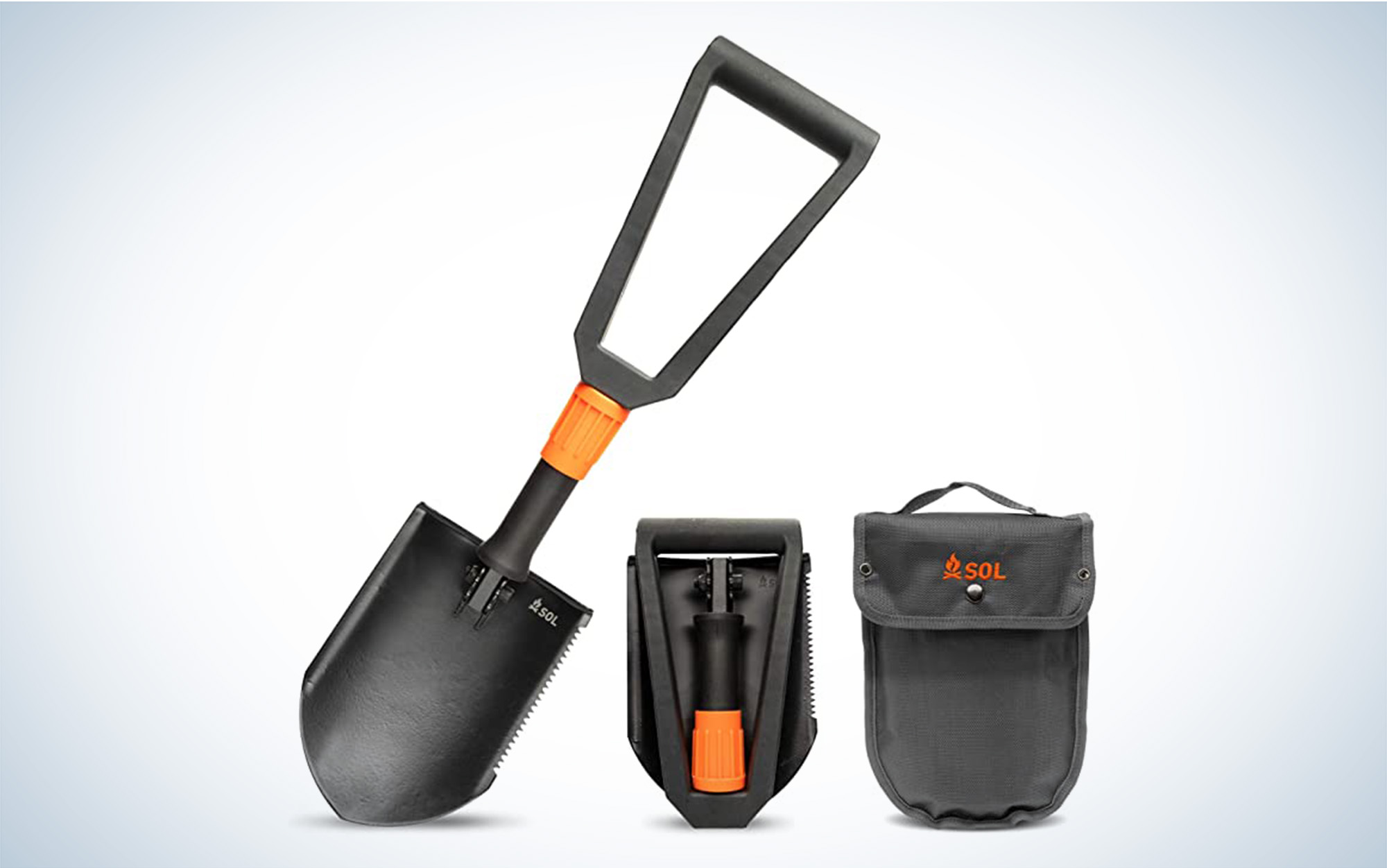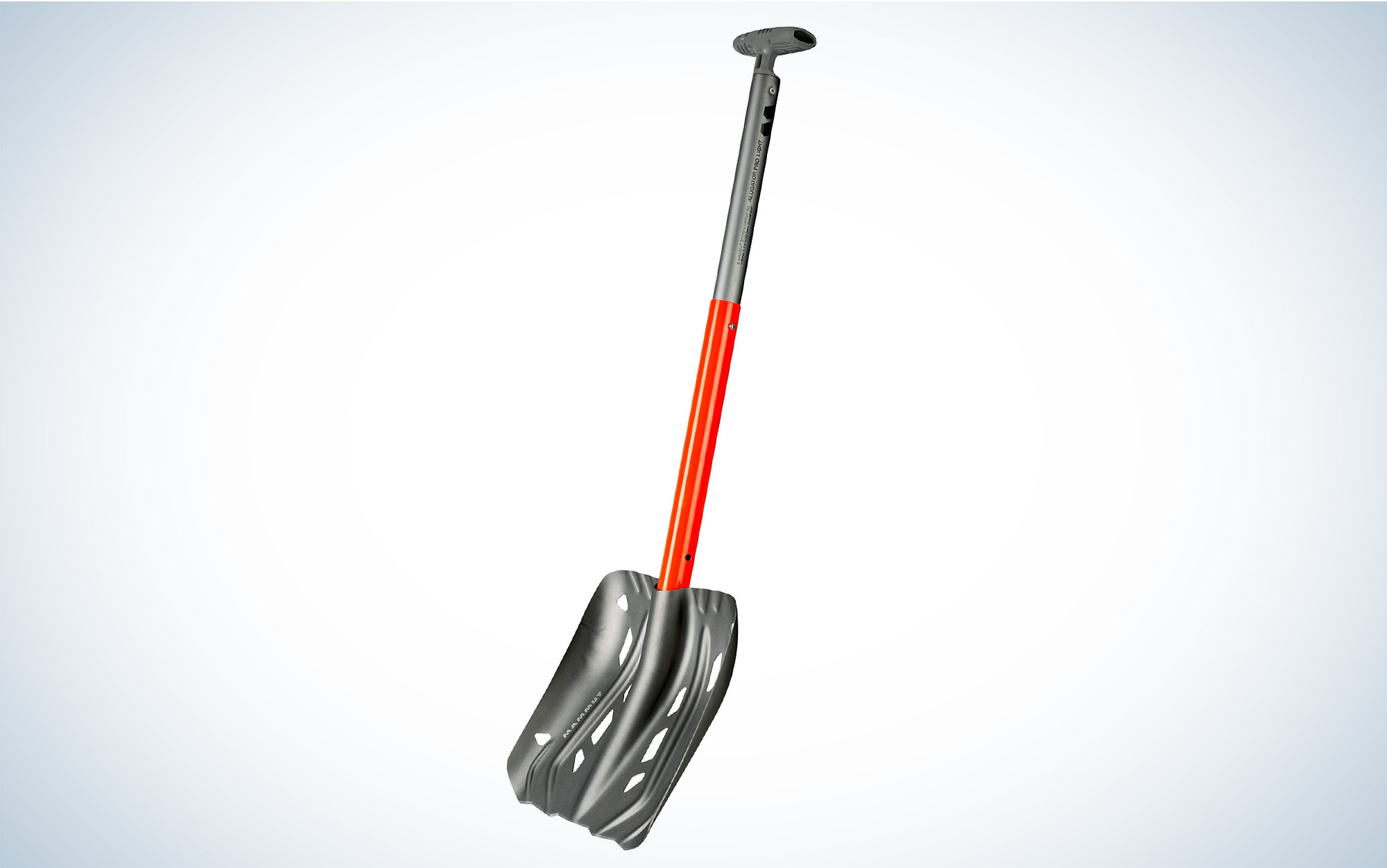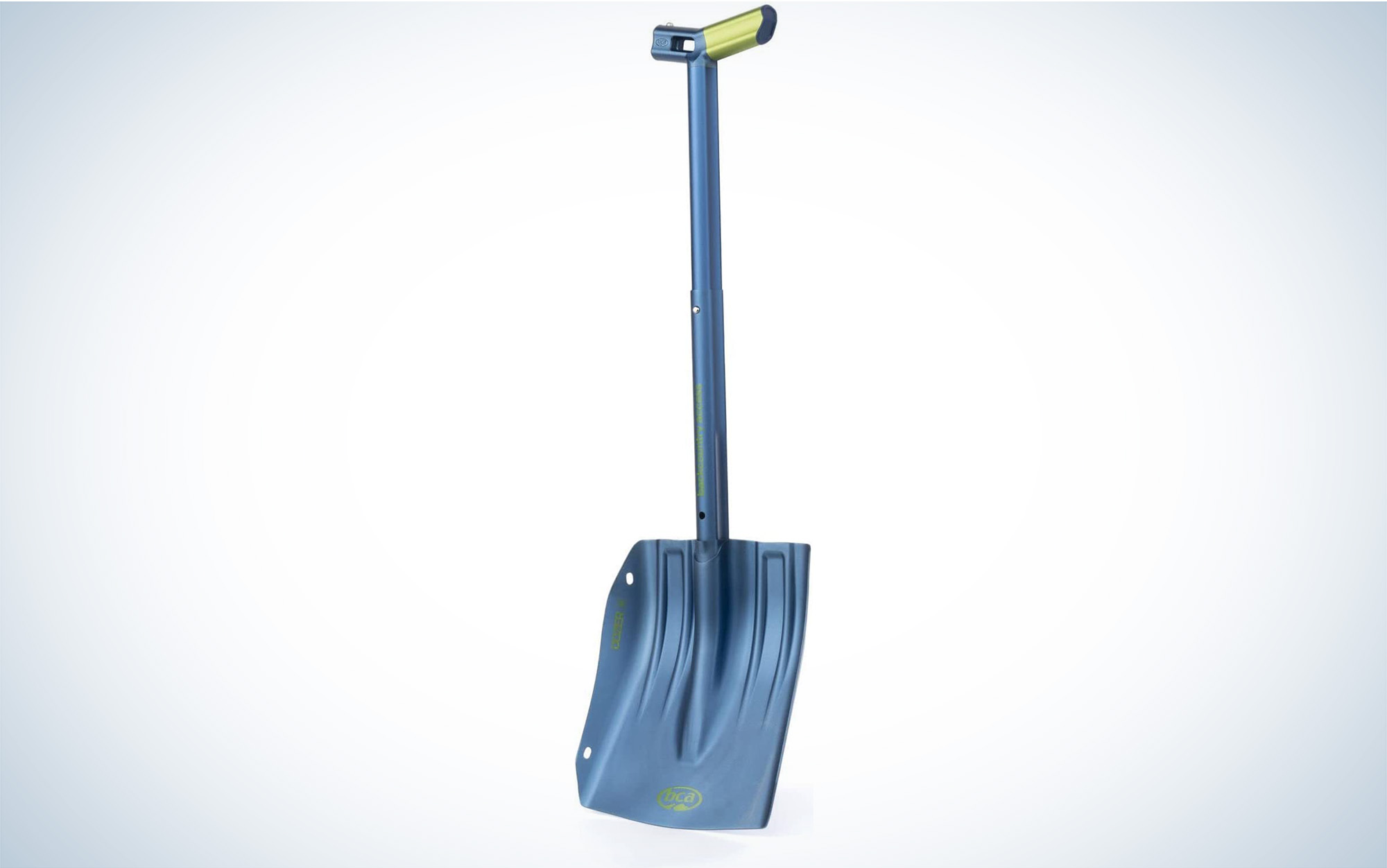We may earn revenue from the products available on this page and participate in affiliate programs. Learn More ›
Camping shovels range from small trowels for digging bathroom holes to larger snow shovels for mountaineering. When I evaluate a trowel, I want to make sure it can hold up to a variety of terrain, including hard-packed desert and rooty Alaskan tundra. When I evaluate snow shovels, I think about durability for other reasons. A broken snow shovel at 20,000 feet can be life-threatening, as I fear the day I will need my snow shovel to dig out my partner from an avalanche.
I also use snow shovels to create tent platforms, dig bathroom holes, dig for clean snow to boil for water, and create walls for protection against the elements. I also keep shovels in my truck as an everyday carry because you never know when you will need to dig out a car or dig an emergency bathroom hole. To find the best camping shovels, I dug holes of all sizes in a wide variety of ground. Here are my picks:
- Most Durable: Vargo Dig Dig Tool
- Best Budget: GSI Outdoors Cathole Trowel
- Best Lightweight: TheTentLab The Deuce #2
- Best Features: Sea to Summit Nylon 66 Pocket Trowel
- Best for Big Holes: SOL Packable Field Shovel
- Best for Mountaineering: Mammut Alugator Pro Light
- Best for Backcountry Skiing: Backcountry Access Dozer 2H Avalanche Shovel
How to Choose a Camping Shovel
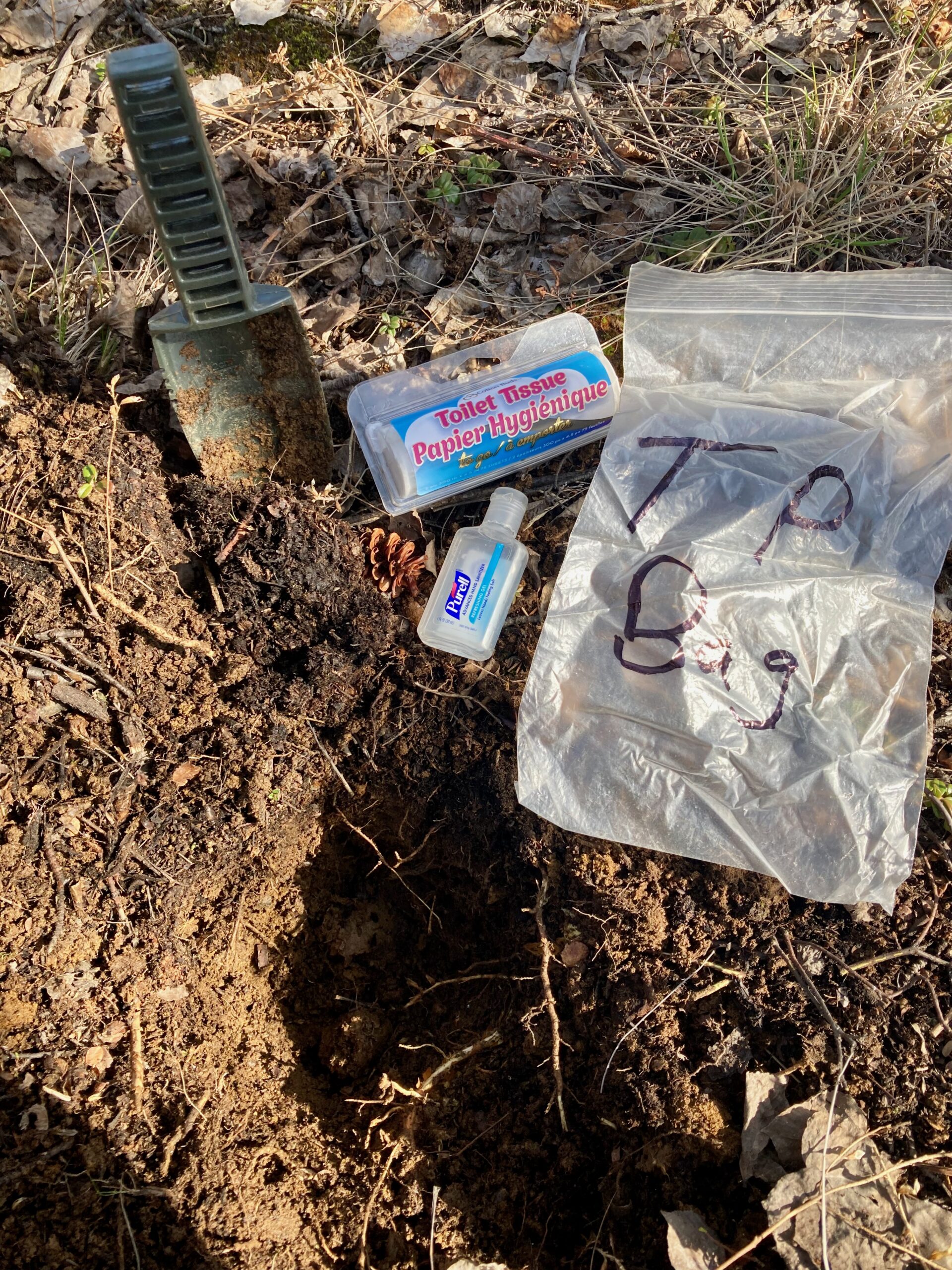
First question should be, what is your intended use—dirt or snow? Then you need to think about the material you prefer—plastic or metal? Next, you need to think about the size of the blade and the ability to store it. Is it going in your backpack, on your backpack, or attached to a sled or snow machine? Does it have any additional features, or can it be used for multiple purposes? Do you need one that has a bright color? I can’t tell you how many times I was in the woods digging my cathole and laid down my trowel, then searched for it as it was the same color as the forest floor. Personally, I like bright orange so I can spot it easily. Similarly, I prefer my snow shovels to have a bright color in case they get buried in snow.
The most common use for camping shovel is to dig a small hole to deposit human waste. I don’t like to talk about my personal medical woes, but I have a stomach condition and have to go to the bathroom at any given moment without a lot of notice. To top it off, I’m not the biggest fan of outhouses. Suffice to say with my 6,000+ miles hiked worldwide in remote areas, shovels have become a lifeline for me. During the 141 days/nights of my Appalachian Trail thru hike, I dug 55 holes to do my business, with just as many times in an outhouse and indoor plumbing when available. So I’ve learned a thing or two about digging catholes and here are some tips from Leave No Trace.
- Locate an area at least 200 feet (about 70 adult paces) from water, trails, and camp.
- Dig an appropriate sized hole (4-6 inches diameter) and 6-8 inches deep with your trowel.
- Do your business.
- Cover the hole with the dirt you dug out and make it look like no one has ever been there.
- Pack out your dirty toilet paper or any feminine products.
Bonus hints: After I set up my camp, I find a good area away from camp and pre-dig my hole. It might be unnecessary for some people, but I know my diseased digestive system, so I know I will have business to do at some point. And there’s nothing like having to go and dig while squeezing your butt cheeks to hold everything in. I also layout my toilet kit before going, making sure my toilet paper, hand sanitizer, and trowel are all set and accessible in my pack.
Best Camping Shovels: Reviews & Recommendations
Most Durable: Vargo Dig Dig Tool
Key Features
- Made of titanium
- Serrated edges
- Doubles as a stake
- 1.25 ounces
- 8 inches
Pros
- Can cut into the ground
- Lightweight
- Comfortable
Cons
- Pricey
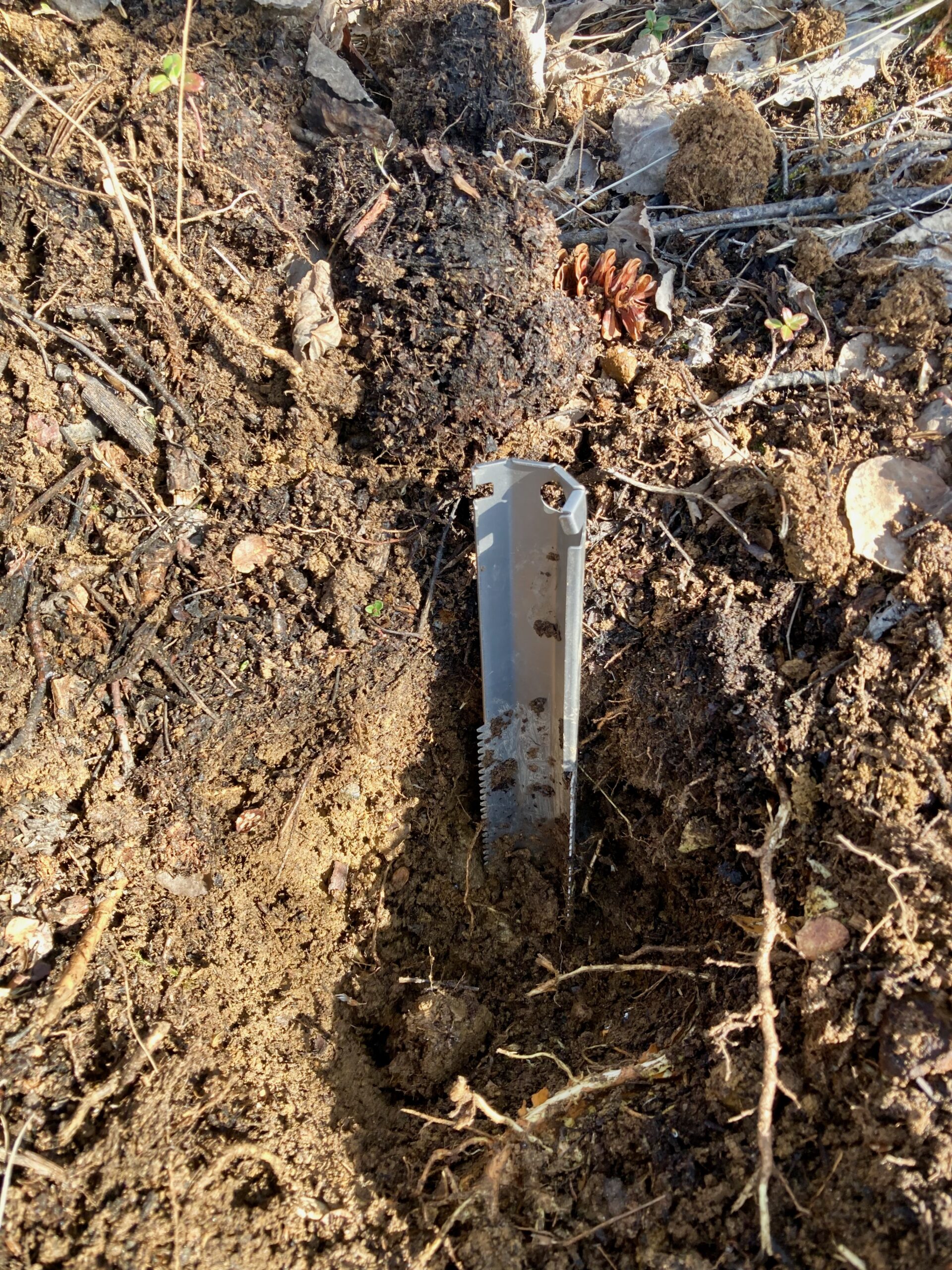
I’ve owned the Vargo Dig Dig Tool for about three years, and it is my go-to trowel for every trip. The Vargo Dig Dig Tool is bomb-proof, is extremely lightweight, can cut into the ground, and doubles as a stake. The ergonomic u-shape design is purposeful for digging, as the sharp edges can cut through the hard ground and roots with ease. It fits perfectly in the side pocket of my pack with my toiletries, and dirt pops right off it when I bang it against the ground.
At 1.25 ounces, it is so lightweight that I never even notice it in my bag. It doubled as a tent stake when I was short while buckling down my tent in gale-force winds. The rounded top is better for pushing down with your hand while digging, although sometimes I can feel it cutting into my hand. I usually just stamp it into the ground with my boot — and that proves its durability as I have never bent it.
Best Budget: GSI Outdoors Cathole Trowel
Key Features
- Serrated blade
- Hard plastic
- 3.1 ounces
- 10 inches
Pros
- Affordable
- Durable
- Many color options
Cons
- Hard to remove dirt from blade
The GSI Outdoors Cathole Trowel is a simple, affordable, and lightweight option for your digging needs. I’ve used the GSI Outdoors trowel for more than ten years, so it has dug hundreds of catholes. It might look dirty since the blade edges hold dirt easily, but it still is in perfectly usable condition. This 10-inch trowel is made of hard, durable recycled food and beverage containers and has a thick handle for a sturdy grip.
It does have serrated edges that help dig and cut into the ground. The proper cat hole needs to be six or more inches according to Leave No Trace ethics, and this shovel has a measurement scale on the blade for a precise hole. They come in an assortment of colors so you can pick out your favorite one. I love the bonus Leave No Trace principles that are etched on the back of the shovel to guide you on proper techniques for going to the bathroom in the outdoors.
Best Lightweight: TheTentLab The Deuce #2
Key Features
- Both ends are functional
- Two etched teeth on either side
- Durable, yet lightweight, aluminum
- Lanyard or carbineer hole
- Recyclable
- 0.6 ounces
- 6.8 inches
Pros
- Lightweight
- Cuts into the ground with ease
- Dual sided
Cons
- Pricey
TheTentLab The Deuce #2 is a favorite among my thru-hiker testers. The Deuce #2 is one of lightest camping shovels out there and has multiple functions and abilities. The minimal weight of 0.6 ounces makes this a no-brainer carry for those who want to travel light. Made of tough 7075-T6 aluminum, the handle end is meant to pry up rocks and cut into the ground to create a hole. Then flip it and use the larger rounded shovel end to lift up the dirt in the hole. If you encounter tough ground, the Deuce has two etched teeth on either side. These are made to last a lifetime, but if you don’t want it anymore, it is 100 percent recyclable. Designed and made in Colorado.
Best Features: Sea to Summit Nylon 66 Pocket Trowel
Key Features
- Retractable handle
- Optional storage area
- Bright orange handle
- 3 ounces
- 5.5 inches collapsed
Pros
- Affordable
- Unique design
Cons
- Not a super-wide blade
- No serration on the blade
The Sea to Summit Nylon 66 Pocket Trowel is a nifty trowel to dig small holes with the ability to collapse and retract and store toilet paper. The Nylon 66 pocket trowel is made of glass-reinforced nylon and weighs 3 ounces. I did notice with strong force, the trowel does flex a bit, and sometimes I worry I will snap it. Even though it fully extends to 9.5 inches, the handle retracts to 5.5 inches into the blade for space saving. When fully extended, the comfortable rounded grip gives you leverage for digging. I love the bonus storage compartment in the hollow handle. Remove the handle’s end cap, and there’s enough room for some toilet paper or hand sanitizer.
Best for Big Holes: SOL Packable Field Shovel
Key Features
- Carbon steel shovel head with serrated edge
- Wide easy-grip handle
- 9 inches collapsed
- 2 pounds
Pros
- Serrated edge
- Collapsible
- Comes with a carrying case
Cons
- No serration on the tip of the blade
- Cannot be locked into a hoe position
- Not ideal for backpacking at 2 pounds
The SOL Packable Field Shovel has the ability to dig bigger holes in tough soil, yet it folds into the size of a tablet. At 2 pounds, the carbon steel shovel head keeps the weight down but the durability up. It can get any job done on the trail, at your campsite, or even around the house. The SOL shovel lives in my truck and is ready when I am car camping, and I need to dig a hole for setting up my shelter or bathroom holes for my group.
I just used it this winter in an emergency at a trailhead where another truck was stuck in some snow. I love the large open handle that allows me to grip with or without gloves on. It measures just under 2-feet long when extended but folds down to 9 inches by 6 inches to fit into its carrying case with belt loop attachment. The serrated blade has 23 sharp teeth, which comes in handy when I need to cut through rooty terrain.
Best for Snow: Mammut Alugator Pro Light
Key Features
- Hard anodized aluminum
- Comes apart easily
- Large T grip
- 1.4 pounds
- 2 feet collapsed
Pros
- Large straight blade
- Retractable handle
- Lightweight
Cons
- The orange shaft faded in the sun
- Expensive
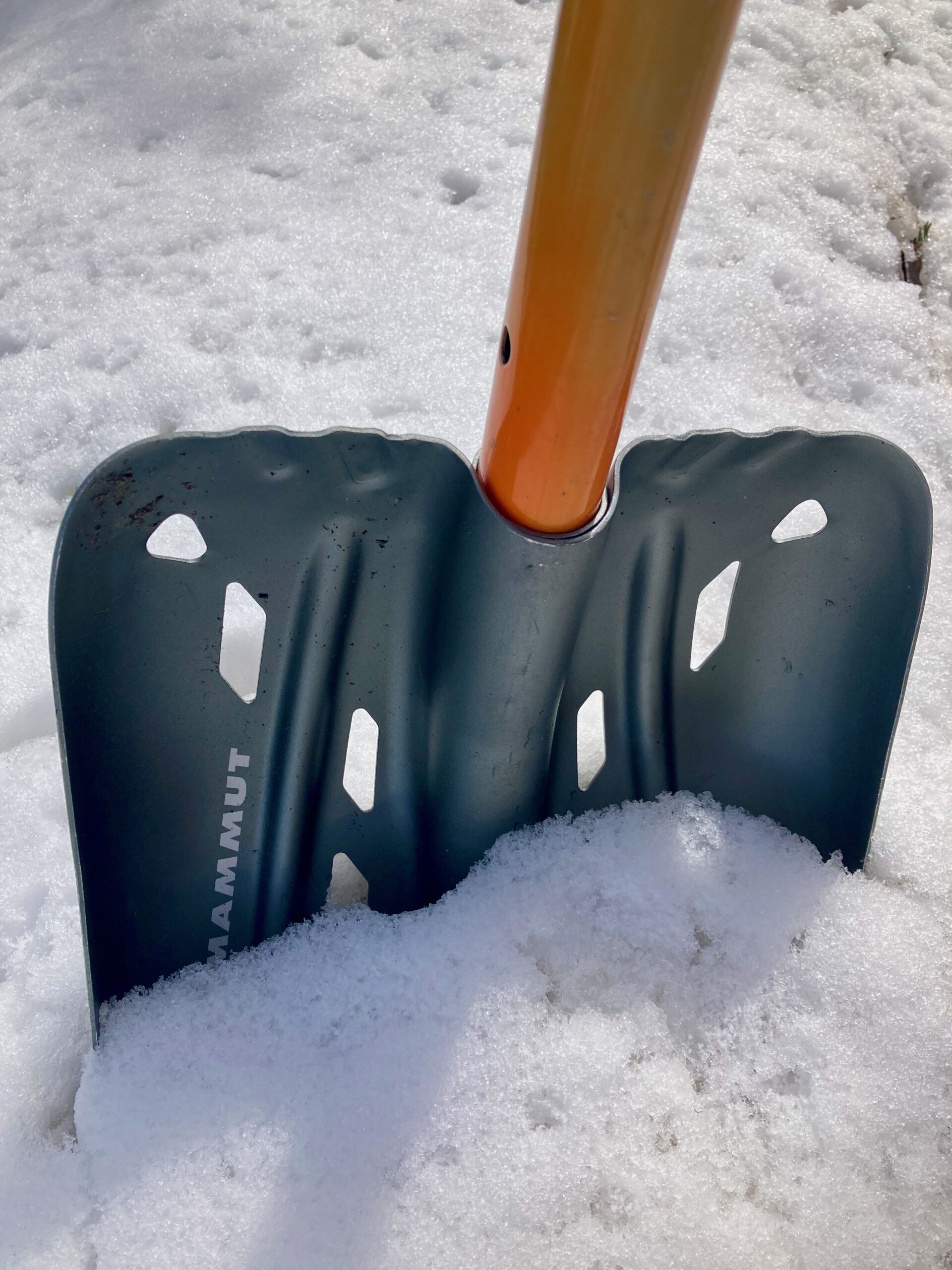
The Mammut Alugator Pro Light is a dependable, durable, and lightweight shovel for digging fast and deep. This 1.4-pound beast was with me on my last Denali expedition and in the backcountry of Alaska for the last couple of years. At almost 3 feet long while fully extended, I don’t need to bend over so much while digging out tent platforms in deep snow. The Alugator Pro Light’s straight blade is meant for cutting snow blocks, which was necessary at all my camp spots on Denali to build walls to protect against the weather.
The whole shovel head is so strong that I can stamp on it to cut into snow and ice. The shovel head has holes in it, which is useful for an emergency anchor to attach equipment like carabineers. The T grip and shaft are so strong that the hardest-packed snow and ice didn’t even phase it. The telescoping shaft slims the shovel down to 2 feet, and it easily attaches to my backpack. The bright orange shaft makes it easy to spot in a pinch, although it did fade to a mute orange while having the 24-hour Alaskan sun beat down on it over the years.
Best for Backcountry Skiing: Backcountry Access Dozer 2H Avalanche Shovel
Key Features
- Ability to push snow
- Low profile
- Stores flat in your pack
- 1.7 pounds
- Packs down to 14 inches
Pros
- Lightweight
- Easy storage in a pack
- Fast assembly
Cons
- Pricey
The Backcountry Access Dozer 2H Avalanche Shovel is a dual-action shovel/hoe that is efficient and reliable. The Dozer 2H deploys very fast, so there’s no fussing around in an emergency situation. At just over 31 inches when fully extended with a T-grip that fits perfectly in your hand with or without gloves, it does fast work while shoveling. It collapses to 15 inches or can be dissembled to pack down even smaller, so storing it in your backpack takes up minimal room (bonus: this shovel actually lays flat in your pack). You can flip the shaft and use the handle to create a hoe so now you can push or pull snow. This option makes carving out tent platforms easy. At 1.7 pounds, it should be a key part of your backcountry ski kit.
How We Tested the Best Camping Shovels
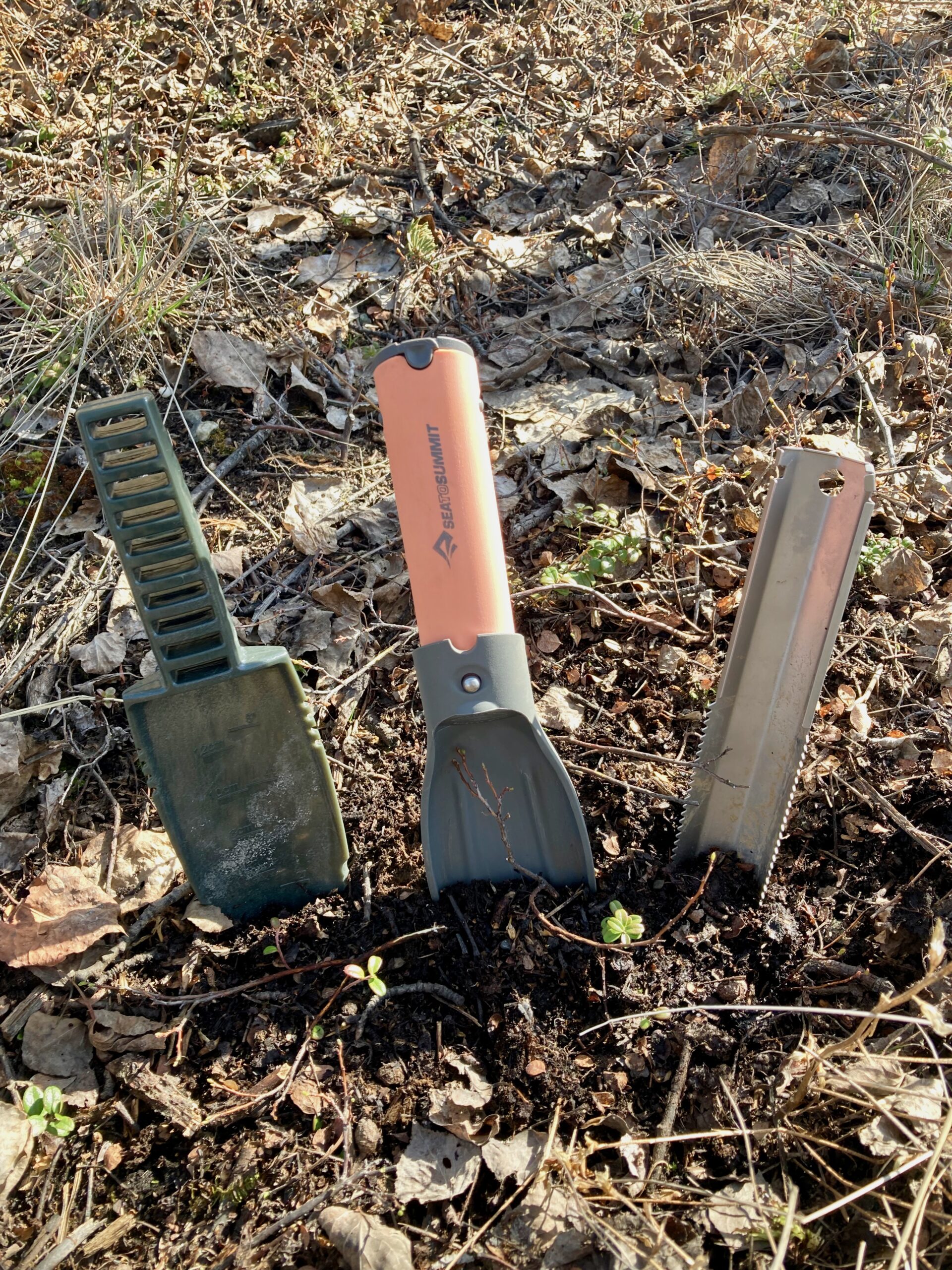
The testing process was pretty straightforward for this review. I dug, dug, then dug some more. I put as much force as I could on the shovels I tested. All of them performed very well and did not break. The Sea to Summit Nylon 66 Pocket Trowel did flex but did not break. I sought out hard soil with rocks and roots (easy in Alaska) for the smaller shovels.
I tested the snow shovels in various snow conditions (again, easy in Alaska). Then, I also sought out feedback from my trusted testers, and a lot of them highly praised TheTentLab The Deuce #2. I observed wear and tear from years of use. None of them were damaged but did get scraped up. Some were easier to clean dirt off than the others. Storage and weight of the shovel were important, and they all needed to be compact or have the ability to collapse.
FAQs
A trowel can cost mere dollars and up to $30. Some of the cheaper ones are made of flimsy metal that will bend when it touches a hard-packed ground. Softer plastic materials will also eventually break from force. The more expensive usually means better material and better performance.
w shovels meant for outdoor activities like skiing, mountaineering, snowshoeing, and winter hiking can cost as little as $10 to over $100. Again, look at the material and make sure it can stand up to packed snow, ice, and you standing on it. They should be made of some type of heavy aluminum and have a sharp edge on the bottom to cut through snow.
No, you do not. If you know there will be bathroom facilities at all your camp spots, you probably wouldn’t need one. You can also dig holes with knives, trekking pole tips, axes, or other hard digging items. I have a friend who hiked the whole Appalachian Trail using these other methods for his bathroom holes. Another option besides digging holes is you can bring a wag bag. Just don’t be that disgusting human that leaves your business right on the ground. It’s not hard to carry a trowel that weighs less than a pound and dig a proper hole. Remember to always Leave No Trace.
Overall you need to look for something that is made of a hard plastic that won’t bend. Same deal with metal—target hard anodized metal that is stiff and won’t rust. When looking at shovels/trowels, don’t be afraid to give it the bend test in your hands. The last thing you want is a broken shovel 100 miles away from the closest store.
Final Thoughts
As I said before, having the best camping shovel can save your life and save the earth. My biggest pet peeve is when I see someone’s business near a trail or in the woods. A simple trowel and knowing how to dig proper catholes can not only help you but will help the earth.
- Most Durable: Vargo Dig Dig Tool
- Best Budget: GSI Outdoors Cathole Trowel
- Best Lightweight: TheTentLab The Deuce #2
- Best Features: Sea to Summit Nylon 66 Pocket Trowel
- Best for Big Holes: SOL Packable Field Shovel
- Best for Mountaineering: Mammut Alugator Pro Light
- Best for Backcountry Skiing: Backcountry Access Dozer 2H Avalanche Shovel
